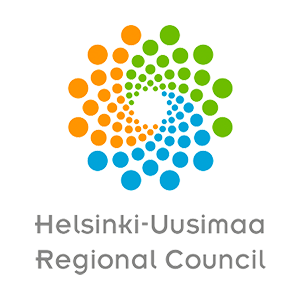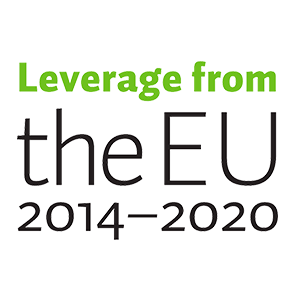
What kinds of business opportunities can companies benefit from by solving problems with sustainability?

Impact investing as a tool to promote sustainable business strategies
sustainable investing, sustainable business strategies, impact investing, impact, net impact, return, business strategy
Impact investing plays a key role in the process of mainstreaming sustainable solutions. It is investigated from the perspectives of investors, companies and industrial areas. We highlight practical examples of what impact investing and impact assessment and evaluation currently mean and how their principles are applied now and in the future.
- New themes: the impacts of environmental, societal and administrative themes and measuring these are emerging as the factors to consider alongside revenue potential in all investments.
- Big changes: there will be significant changes in the requirements, methods and tools for measuring impact in the coming decades, and these will also have an impact on the operations of every company.
- Starting point: we urge companies to identify the key perspectives of their business on sustainable society and to use these perspectives as the foundation for assessing the impact potential of their operations.
This solution is right for you if…
- you are looking for ways for your company to update its strategy;
- you are looking for information about the factors stakeholders will be looking for in investments in the future; or
- you are looking for inspiring practical examples of how positive impact generates revenue for businesses.
BASIC FACTS
- The concept of impact investing has been primarily created to provide information to companies and, consequently, industrial areas.
- Companies can apply for impact investments to fund both operational areas for improvement and areas for improvement related to products and services. From an industrial area’s perspective, impact investing can be suitable for infrastructure-related projects, the goal of which is to demonstrate clear potential for impact and profitability.
- Concept executed by:
- University of Turku, Finland Futures Research Centre, Essi Silvonen
- Green corporate finance solutions forums of the HNRY project
- Practical solutions assessed together with StepOne Tech Oy, Upright Oy, Nordic FoodTech VC, Metsä Group and the Finnish Venture Capital Association
Sustainable investment strategies focus on solutions instead of problems
The role of impact assessment in investment decisions has grown bigger since 2000, and this trend has only grown over the past few years. So far, the trend has mostly been described through the perspectives of sustainable investing and impact investing.
Sustainable investing is an investment discipline that considers environmental, social and corporate governance (ESG) criteria and demands that these are met and compliant with statutory standards and the level of the company’s impact on both the environment and the human population. Responsible investors do not invest in companies or sectors which are based on unsustainable concepts or which promote harmful practices. Sustainable investing avoids investing in companies or projects that have a negative impact.
In impact investing, the first criterion to consider when deciding what to invest in is the goal of exclusively and expressly investing in activities that benefit the environment or society. In other words, impact investing is built on the principle of producing a positive impact. This positive impact must also be measurable or otherwise clearly demonstrable, and investments must also have potential for financial return.
As it develops, impact investing can lead to a systemic change towards a more sustainable society
In the past few years, impact investing has emerged as a growing investment discipline and the International Finance Corporation (IFC) has estimated the market to have huge growth potential. It has been estimated that, as it expands, impact investing can lead to a systemic change towards a more sustainable society. In other words, a sustainable society cannot be achieved unless financers and investors invest in activities that solve problems and help build a sustainable society.
The Global Impact Investing Network (GIIN) estimated the impact investing market to be worth approximately EUR 715 billion in 2020. According to a UN assessment, achieving the goals of sustainable development will require over USD 2000 billion globally by 2030. Experts believe that this cannot be achieved without contributions from private and institutional investors. Impact investing also seeks out financially profitable companies and projects, and investments must lead to new investments.
In addition to investors, this also creates opportunities for companies. Investors mainly invest in companies that solve problems in a profitable way. This creates opportunities particularly for innovative companies whose strategies focus on solving problems affecting the environment and society, challenging and changing the status quo and disrupting operational and production strategies and markets that have a negative impact.
Upright Oy brings transparency and comparability to assessing impacts of companies and their value chains
Assessing and evaluating sustainability in companies and investments is an area and a market with a lot of room for improvement in terms of transparency, principles, tools and standards. Globally, there are roughly 200 organisations that create tools for impact assessment, the majority of which are in their infancy. Companies, investors and individuals all need transparent information to support their decision making.
Upright Oy is a Finnish company that integrates a company’s overall impact assessments and measurements by quantifying the impacts of its business operations. The company’s objective is to make companies’ impacts transparent, which would help different stakeholders make decisions based on facts when choosing companies to work with. The goal is to produce open data that can be compared between companies, funds and industry sectors and which can make it possible to perform evaluations that go deeper into the companies’ value creation mechanisms at a strategic level. At the same time, it steers organisations to review and improve the building blocks of their operations when they have to openly justify their operations to stakeholders through their systemic net impacts. More information about Upright’s views on impact assessment, the company’s operating principles and mathematical calculation method based on the assessment of net impacts is available at https://netimpactreport.com/.
Impact investing and impact assessment from the perspective of an investment fund, company and industrial area
NFT.VC, or Nordic FoodTech VC, is a fund that invests in start-ups. Defining the parameters for impact assessment at the early stages of a company’s life can be very challenging, and it is usually not done until the company’s product development is more advanced. In the near future, both standards and calculation methods need to be developed and harmonised to enable reliable measurements and assessments. As part of making investment decisions, NFT.VC heavily scrutinises every company’s impact potential based on what kind of changes it could introduce to the food chain.
For years, StepOne Tech Oy focused on the development of eFlexFuel technology with no external funding. When searching for investors, the company emphasised that investors should not be solely focused on potential return but should instead share the company’s vision of long-term sustainable impact potential and developing technology with positive impacts as the main criteria. To learn more about eFlexFuel, visit
Metsä Group’s decision to invest in the construction of the MetsäFibre Kemi bioproduct mill is an example of an investment that was based on investigating and analysing both its positive and negative impacts before the investment decision was made. Metsä Group’s strategy not only highlights the role of impact assessment as part of the investment decision, but also the achievement of the company’s sustainability targets, the impact potential of its own value chain and the environmental and societal impact potential.
TAKE-HOME MESSAGES
- Investing in and financing different projects always has an impact – it has both positive and negative impacts on the project, its immediate environment and the surrounding world on a wider scale. The key is to determine if the positive impacts of the activity outweigh the negative impacts.
- Impacts and impact assessment and evaluation are the central themes of impact investing. In order to attract impact investments, a company must be able to assess and justify its evaluation of the impact of the activity on both the environment and the society.
- It is primarily the company’s responsibility to identify and demonstrate the impact potential of its own operations. This applies to both searching for investors and, increasingly in the future, the company’s partners and customers.
Sources
HNRY’s impact investing solutions forum; 14/01/2020; presentations, materials and group discussions
Piloting of the concept and practical examples, interviews:
Jonne Kuittinen, Finnish Venture Capital Association, 11 March 2021
Mika Kukkurainen, NFT VC, 12 March 2021
Tuomo Isokivijärvi, StepOne Tech Oy, 5 March 2021
Kaija Pehu-Lehtonen, Metsä Group 22 March 2021
Toni Laitinen, Upright Oy, 18 March 2021
For more details, please contact Essi Silvonen at esersi@utu.fi, Finland Futures Research Centre, University of Turku
“In the food sector, capital is only available to future-proof companies – and this will soon be the case in other industries, too.”
– Mika Kukkurainen. NFT.VC 19.3.2021
Download
Links
HNRY Vaikuttavuussijoittamisen ratkaisufoorumi 14.1.2020 esitykset ja materiaalit sekä ryhmäkeskustelut
Lisätiedot: Turun yliopisto, Tulevaisuuden tutkimuskeskus, Essi Silvonen esersi@utu.fi




